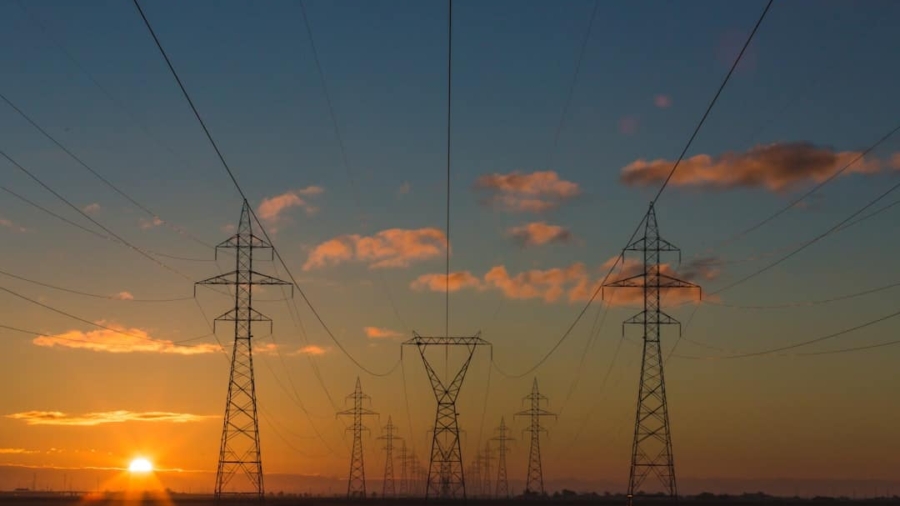As the demand for cloud computing continues to surge, the environmental impact of traditional data centers has come under scrutiny. Green data centers are emerging as a vital solution to mitigate the ecological footprint associated with cloud services. These facilities are designed with sustainability in mind, utilizing energy-efficient technologies and practices that significantly reduce energy consumption and carbon emissions.
The importance of green data centers lies not only in their ability to lower operational costs but also in their role in promoting a more sustainable digital economy. By adopting eco-friendly practices, organizations can align their operations with global sustainability goals, thereby contributing to a healthier planet. Moreover, green data centers play a crucial role in addressing the growing concerns surrounding climate change.
The IT sector is responsible for a substantial portion of global energy consumption, and as more businesses migrate to cloud-based solutions, the energy demands of data centers are expected to rise. By implementing renewable energy sources, optimizing cooling systems, and utilizing energy-efficient hardware, green data centers can significantly reduce their reliance on fossil fuels. This transition is essential not only for compliance with increasingly stringent environmental regulations but also for meeting the expectations of environmentally conscious consumers who prioritize sustainability in their purchasing decisions.
Key Takeaways
- Green data centers are crucial for sustainable cloud computing, as they reduce the environmental impact of data storage and processing.
- Innovations in energy-efficient cooling systems are making data centers more sustainable by reducing their energy consumption and carbon footprint.
- Advancements in renewable energy sources, such as solar and wind power, are being increasingly used to power data centers, further enhancing their sustainability.
- Artificial intelligence plays a key role in optimizing data center energy efficiency by analyzing and adjusting energy usage in real time.
- Green data centers have a significant impact on reducing carbon emissions, contributing to global efforts to combat climate change.
Innovations in Energy-Efficient Cooling Systems for Data Centers
Cooling systems are one of the most significant contributors to energy consumption in data centers, accounting for nearly 30% of total energy use. Innovations in cooling technologies are therefore critical for enhancing the energy efficiency of these facilities. Traditional air conditioning systems are being replaced by advanced cooling solutions such as liquid cooling and immersion cooling.
Liquid cooling systems utilize water or other coolants to absorb heat directly from servers, allowing for more efficient heat transfer compared to air-based systems. This method not only reduces energy consumption but also enables higher server densities, maximizing space utilization.
For instance, some facilities are strategically located in regions with cooler climates, allowing them to use outside air to cool their systems during certain times of the year. This method can drastically reduce the need for mechanical cooling, leading to significant energy savings. Additionally, advancements in thermal management technologies, such as hot aisle/cold aisle containment strategies, help optimize airflow within data centers, further enhancing cooling efficiency.
By adopting these innovative cooling solutions, data centers can achieve substantial reductions in energy consumption while maintaining optimal performance levels.
Advancements in Renewable Energy Sources for Powering Data Centers
The shift towards renewable energy sources is a cornerstone of the green data center movement. As organizations strive to reduce their carbon footprints, many are investing in solar, wind, and other renewable energy technologies to power their operations. Solar panels installed on rooftops or adjacent land can generate significant amounts of electricity, often enough to meet a substantial portion of a data center’s energy needs.
For example, Google has committed to operating its data centers on 100% renewable energy, achieving this goal through extensive investments in solar and wind projects around the world. Wind energy is another promising avenue for powering data centers sustainably. Large-scale wind farms can provide clean electricity that can be directly fed into the grid or used to power specific facilities.
Companies like Microsoft have entered into power purchase agreements (PPAs) with wind farm operators to secure renewable energy for their data centers. These agreements not only help stabilize energy costs but also contribute to the development of new renewable energy projects, fostering a more sustainable energy landscape. As technology continues to advance and the cost of renewable energy decreases, it is expected that an increasing number of data centers will transition to fully renewable power sources.
The Role of Artificial Intelligence in Optimizing Data Center Energy Efficiency
Artificial intelligence (AI) is revolutionizing various industries, and data centers are no exception. AI technologies are being employed to optimize energy efficiency by analyzing vast amounts of operational data and making real-time adjustments to improve performance. For instance, AI algorithms can predict server workloads and adjust cooling systems accordingly, ensuring that energy is used only when necessary.
This predictive capability not only enhances efficiency but also prolongs the lifespan of equipment by reducing wear and tear. Furthermore, AI can facilitate better resource allocation within data centers by dynamically managing workloads across servers based on their current energy consumption and performance levels. This approach minimizes energy waste and maximizes resource utilization.
Companies like Facebook have implemented AI-driven systems that monitor and control their data center operations, resulting in significant reductions in energy usage while maintaining high levels of service reliability. As AI technology continues to evolve, its potential for further enhancing energy efficiency in data centers will likely expand, paving the way for even greener operations.
The Impact of Green Data Centers on Reducing Carbon Emissions
The transition to green data centers has a profound impact on reducing carbon emissions associated with cloud computing. By implementing energy-efficient technologies and utilizing renewable energy sources, these facilities can significantly lower their greenhouse gas emissions compared to traditional data centers. For instance, a study by the Natural Resources Defense Council (NRDC) found that if all U.S.
data centers were to adopt best practices in energy efficiency and renewable energy usage, they could collectively reduce carbon emissions by up to 80 million metric tons annually. Moreover, green data centers contribute to broader climate goals by setting an example for other industries to follow. As more organizations recognize the importance of sustainability in their operations, the ripple effect can lead to widespread adoption of eco-friendly practices across various sectors.
This shift not only helps combat climate change but also fosters innovation in green technologies and services. By prioritizing sustainability, green data centers are not just reducing their own carbon footprints; they are also driving systemic change that benefits the entire economy.
Strategies for Designing and Building Eco-Friendly Data Centers
Optimizing Site Selection for Renewable Energy
One effective strategy is to choose locations that minimize environmental impact while maximizing access to renewable energy sources. For example, building data centers near hydroelectric plants or wind farms can facilitate direct access to clean power while reducing transmission losses associated with long-distance electricity transport.
Sustainable Construction Practices
In addition to site selection, employing sustainable construction practices is essential for creating eco-friendly data centers. This includes using recycled materials, optimizing building orientation for natural light and ventilation, and incorporating green roofs or walls that enhance insulation and biodiversity. Furthermore, integrating advanced building management systems (BMS) can help monitor and control energy usage throughout the facility, ensuring that resources are used efficiently from day one.
Long-Term Cost-Effectiveness and Environmental Benefits
By adopting these strategies during the design and construction phases, organizations can create data centers that are not only environmentally friendly but also cost-effective over their operational lifetimes.
The Integration of Green Data Centers with Smart Grid Technology
The integration of green data centers with smart grid technology represents a significant advancement in sustainable energy management. Smart grids utilize digital communication technology to monitor and manage electricity flows more efficiently than traditional grids. By connecting green data centers to smart grids, operators can take advantage of real-time data on energy supply and demand, enabling them to optimize their energy usage based on grid conditions.
For instance, during periods of high renewable energy generation—such as sunny or windy days—data centers can increase their power consumption without relying on fossil fuels. Conversely, during peak demand periods when conventional power plants are activated, these facilities can reduce their energy usage or even temporarily shut down non-essential operations. This flexibility not only helps stabilize the grid but also allows data centers to operate more sustainably by aligning their energy consumption with cleaner sources of electricity.
As smart grid technology continues to evolve, its integration with green data centers will play a crucial role in creating a more resilient and sustainable energy ecosystem.
The Future of Green Data Centers in Promoting Sustainable Cloud Computing
Looking ahead, the future of green data centers appears promising as technological advancements continue to drive innovation in sustainability practices within the cloud computing sector. As organizations increasingly prioritize environmental responsibility, the demand for green data center solutions is expected to grow exponentially. This trend will likely lead to further investments in research and development aimed at enhancing energy efficiency and reducing carbon emissions across the industry.
Additionally, regulatory frameworks are evolving to support sustainable practices within the IT sector. Governments around the world are implementing policies that incentivize the adoption of renewable energy and energy-efficient technologies in data centers. These initiatives will not only accelerate the transition towards greener operations but also create a competitive landscape where organizations that prioritize sustainability gain a strategic advantage.
In conclusion, as cloud computing becomes an integral part of modern life, the importance of green data centers cannot be overstated.
Through continued innovation and collaboration across industries, green data centers will play a pivotal role in shaping a more sustainable cloud computing landscape for generations to come.
If you are interested in sustainable technology, you may also want to check out this article on the best WordPress hosting companies in 2023. Just like green data centers, choosing the right hosting provider can have a significant impact on the environment. By opting for a hosting company that prioritizes sustainability, you can contribute to a more eco-friendly digital landscape.
FAQs
What is a green data center?
A green data center is a facility that is designed to minimize its environmental impact by using energy-efficient technologies, renewable energy sources, and sustainable practices.
What is sustainable cloud computing?
Sustainable cloud computing refers to the use of cloud computing resources in a way that minimizes environmental impact and promotes long-term sustainability.
What are the benefits of green data centers for sustainable cloud computing?
The benefits of green data centers for sustainable cloud computing include reduced energy consumption, lower carbon emissions, cost savings, and a smaller environmental footprint.
What technologies are used in green data centers for sustainable cloud computing?
Technologies used in green data centers for sustainable cloud computing include energy-efficient servers, virtualization, renewable energy sources, and advanced cooling systems.
How can companies transition to green data centers for sustainable cloud computing?
Companies can transition to green data centers for sustainable cloud computing by implementing energy-efficient technologies, adopting renewable energy sources, and optimizing their data center infrastructure for sustainability.
What are the challenges of implementing green data centers for sustainable cloud computing?
Challenges of implementing green data centers for sustainable cloud computing include high initial costs, technological limitations, and the need for ongoing maintenance and monitoring to ensure sustainability.



